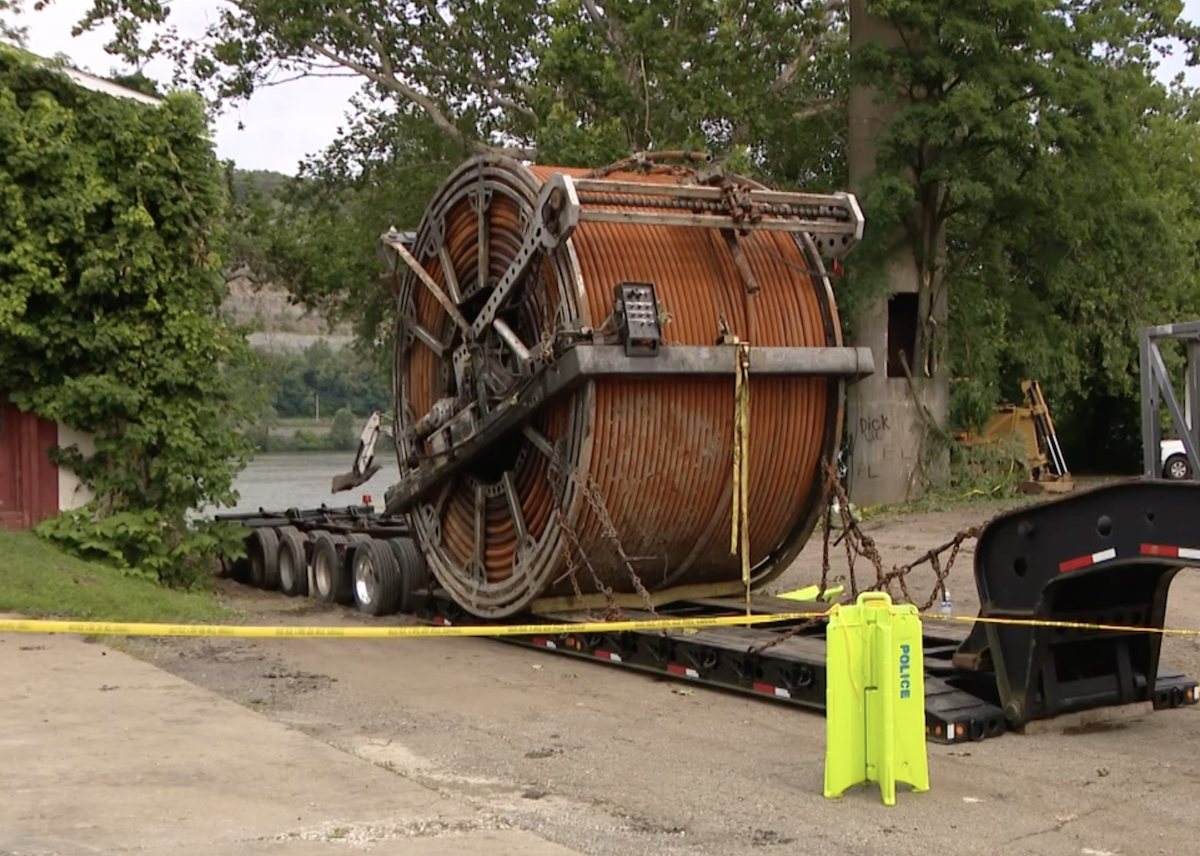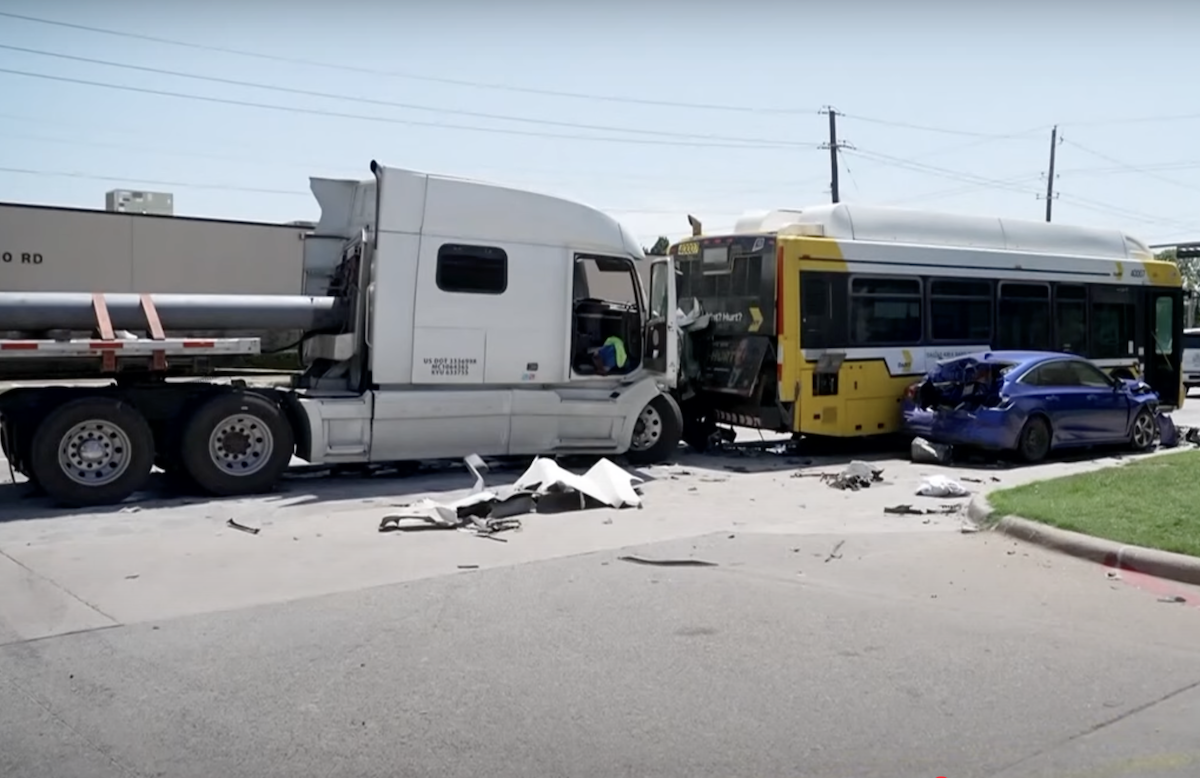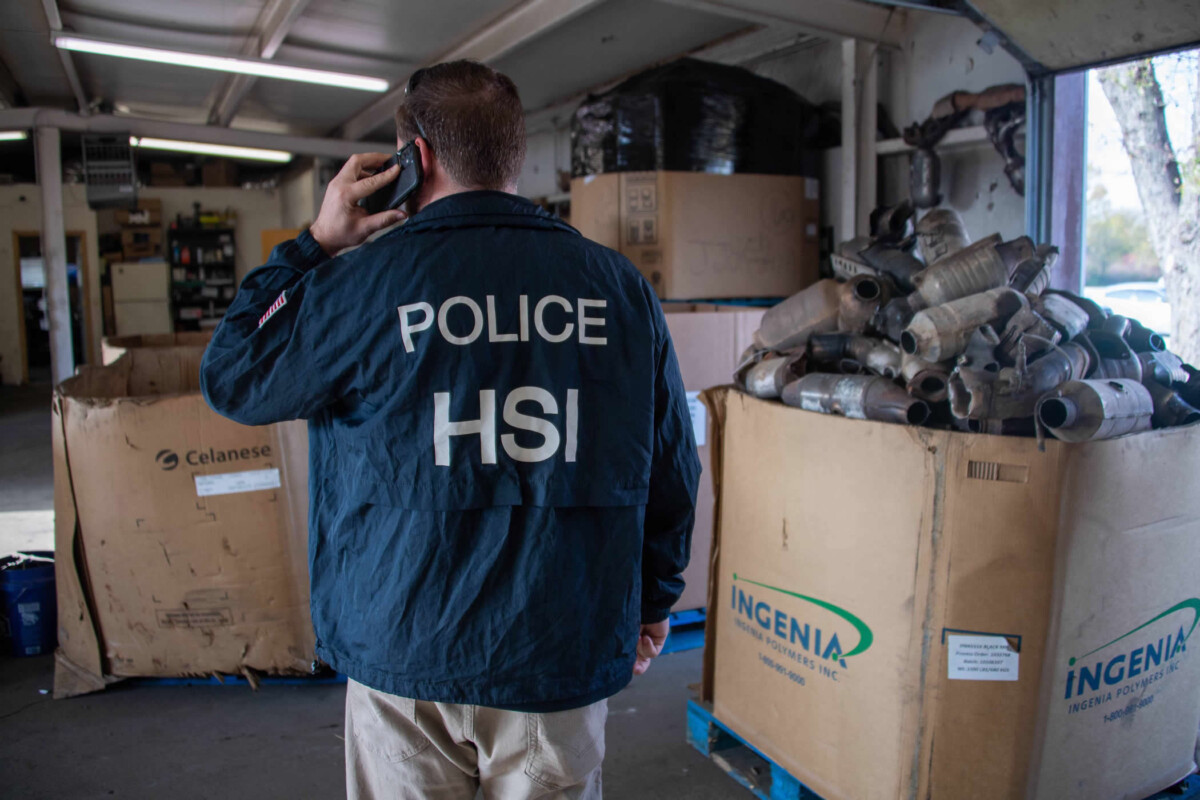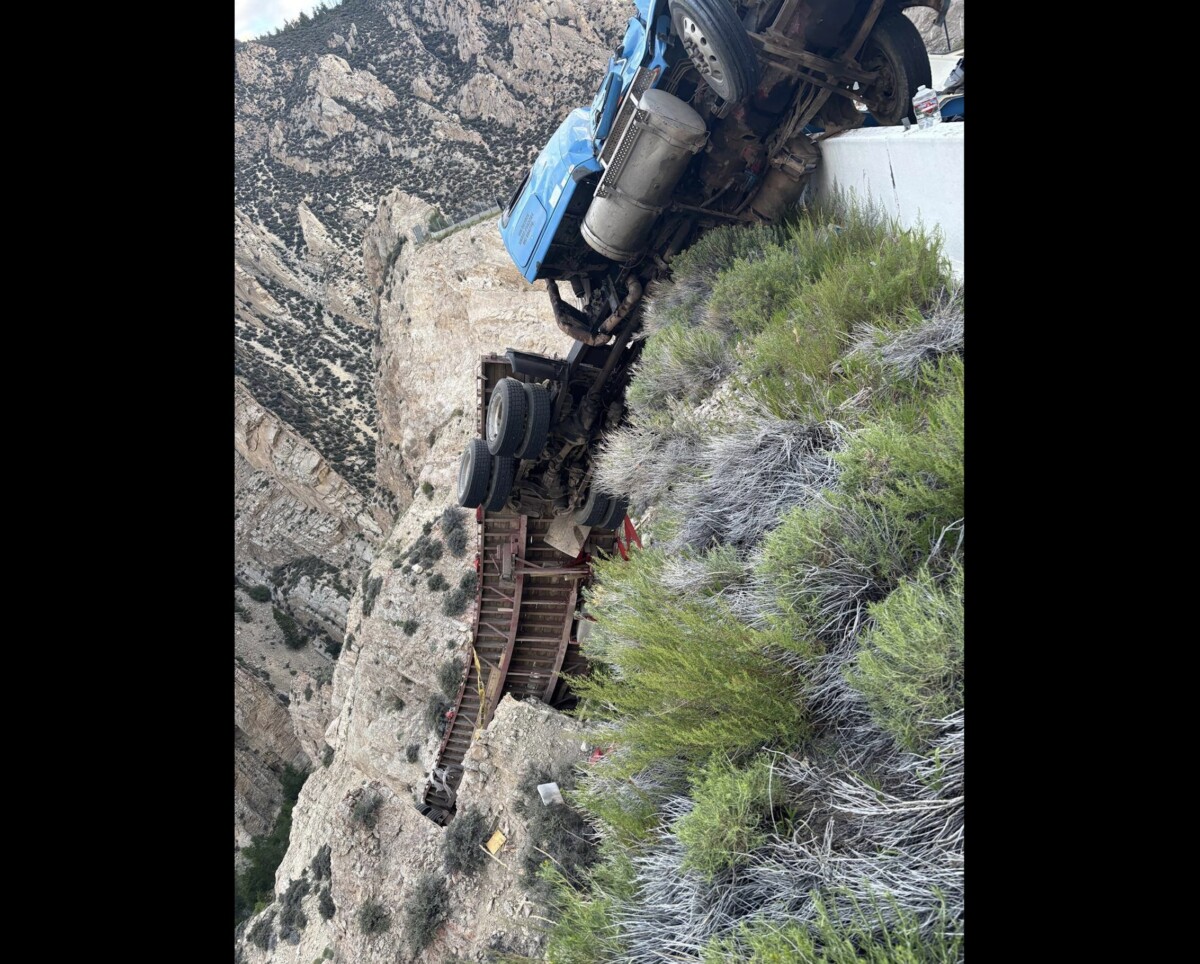Orbcomm
In his 47 years as a technician, Tony Morthland remembers a time when preventive maintenance on trailers was only performed at three-month intervals. Later, it extended to four months, and nowadays, it’s at six.
Today, it’s not uncommon for technicians to see trailers once or twice a year, said Morthland, who is now the director of equipment and facilities for Nussbaum Transportation in Hudson, Ill. Fleet maintenance managers like Morthland say the trailer and its components have improved because of the benefits of connected trailer technology. The systems can function as an early-warning system, Morthland noted.
“You can tell right away if you’ve got a problem with the trailer,” he said.
Initially, some fleets were drawn to connected trailer technology by the benefits of GPS and the ability to track equipment. UPS Inc. added GPS to its U.S. trailers in 2017, said Anthony Marshall, vice president of maintenance and engineering for transportation equipment. The company, which ranks No. 1 on the Transport Topics Top 100 list of the largest for-hire carriers in North America, began ordering the latest connected-vehicle technology on new trailers beginning around three years ago. Today, about 10% of UPS’ nearly 100,000 trailers are equipped, Marshall said.

Marshall
UPS is not retrofitting trailers, he said. The rate of implementations will be determined by attrition.
“Generally speaking, we’re cradle-to-grave, meaning that we purchase a trailer new, and we keep it as long as possible,” Marshall said. “We have some trailers still in our network that are almost 30 years old.”
Explaining how information is collected and transmitted, Carl-Christoph Reckers, CEO of FleetPulse, noted that information is collected and transmitted in broad terms to distinguish between hard-wired and wireless solutions.
“[Hard-wired solutions] still provide the most accuracy, and there are also some [wireless] sensors that are not yet available,” he said, adding hard-wired sensors provide the most comprehensive picture across brakes, lights and tires. “But the flip side of that is, you need to install the components.”

Reckers
Aftermarket installation of hard-wired solutions tends to be cumbersome, Reckers observed. To transmit the data collected by the sensors, FleetPulse and some other systems rely on a cellular gateway, a device attached to the trailer.
Peterson Manufacturing Co.’s smart trailer offering, PetersonPULSE, takes “mainly a CAN-bus based approach to gathering information from a trailer,” in part because a controller area network offers security, Al Anderson, vice president of sales and marketing, said in an email. He noted the company’s approach is “telematics device agnostic.”
“If a fleet is using a specific type of device to transmit trailer tracking data, we can work with the provider to get information from the trailer to the cloud and ultimately back to the fleet’s back office,” Anderson said.

Anderson
The Federal Motor Carrier Safety Administration announced in November that it would research smart trailer technology. The agency said its Automated CMV Evaluation program will examine how smart-trailer data can be utilized for predictive/preventive maintenance.
It also will conduct research “to inform communications standards and best practices for trailer-to-tractor communications and trailer (or tractor)-to-infrastructure communications,” the agency said.
Jack Legler, technical director for American Trucking Associations’ Technology & Maintenance Council, said that research and development into a new connector that would replace the current seven-way standard pin is underway but years away from fruition.

Legler
Meanwhile, fleet users of today’s systems monitor braking systems for diagnostic trouble codes, lights that are out or broken and tires that are leaking — known in shorthand as “BLT.” Marshall said UPS uses the systems for those issues and to monitor wheel-end temperature and brake pad wear.
“From a maintenance standpoint, you get to see a lot of different things going on,” Marshall said. For example, he said, if a trailer is “on the rail more, then the brake systems are not going to need the same amount of maintenance as a unit that’s traveling on the road more.”
UPS is spec’ing a range of available systems for its trailers. “Generally speaking, we always stay open in that regard, so we don’t necessarily specify one player,” Marshall said.
Working With Providers
Fleet operators said they sometimes expand capabilities of the systems by adding sensors.
“We’ve got an air tank sensor,” Nussbaum’s Morthland said. “We can tell, if the trailer is just sitting there, if air is going down.”
Nussbaum uses connected trailer technology provided by Phillips Connect. A dashboard displays a “health page” in the user interface that enables maintenance staff to delve into issues by category, such as ABS codes and tire problems.
“If it’s got something that’s really bad it sends us an email, but most of the time we work off the dashboard,” Morthland said. By drilling down, a user can see a trailer’s number, its location and learn whether “someone is going to hunt for this trailer in the next 24 to 48 hours,” he said. If the repair isn’t made, and “the driver hooks to it, now it becomes a breakdown,” Morthland said. “But if you can fix it before the driver gets it, then we call that preventative maintenance.”

Wallin
Nussbaum also added a sensor that indicates whether its automatic tire inflation system is maintaining 100 pounds per square inch. The fleet first installed the sensors about five years ago and has them on three-quarters of its 1,600-plus trailers, Morthland said.
Mark Wallin, senior vice president of products for Phillips Connect, said that while many fleet operators rely on ATIS, many also want to monitor it “to make sure that nobody’s turned it off [and] that it’s functioning correctly.”
Samsara partnered with bearing manufacturer SKF, which has a wheel-end monitoring sensor. Samsara integrated with the sensor so that its system can alert users if a wheel-end is getting hot and detect whether vibration is occurring in the bearing, said David Gal, vice president of product and engineering .
Last year, Samsara worked with fleet customers to sharpen insight into antilock braking systems. “ABS is a notoriously difficult system to debug and to fix because faults can be intermittent,” Gal said.

Gal
He explained that drivers and managers might see that a warning light popped on and off, for example, prompting a check by maintenance, which reports that the system looks fine. To avoid losing time looking for trouble that isn’t there, fleet users suggested that the system display the fault codes, enabling them to make their own interpretations — for example, that a fault code appears to have been triggered by cold weather that caused the sensor to get stuck, said Gal.
In March, Samsara announced integrations with Continental’s TPMS and Hendrickson’s ATIS. The integrations are designed to show results in the dashboard display that Samsara presents to customers so that they can spot problems early and can help prevent unplanned maintenance, the company said.
Automatic tire inflation systems are standard on some trailers, and some fleets opt for tire pressure monitoring systems, said Reckers of FleetPulse, adding that fleets typically see good ROI on both.

Hoffman
Walter P. Rawl and Sons, a vegetable grower, processor and distributor based in Pelion, S.C., last year implemented Powerfleet connected trailer technology to monitor and maintain many of its 130 trailers and their temperature-control units, provided by Carrier Transicold and Thermo King. Tony Hoffman, transportation safety manager, said the Powerfleet technology provides round-the-clock monitoring of oil pressure on the refrigeration units.
“Any type of code that reefer throws, it sends us an alert,” Hoffman said.
Reefer performance reports can be set to automatically download to customers, “which is really important if you have a claim,” Hoffman said. The system tracks usage hours on the refrigeration units and issues a notification when service is due, Hoffman noted.
The company’s operating area ranges from Florida to Maine and Texas to Iowa. By monitoring the reefer units, the Powerfleet technology helps the company keep the cold chain intact. Hoffman also pointed out that the technology can overcome a “blame the driver” tendency, for example if the cold chain is broken.
“You can tell if the driver ran the reefer out of fuel or if it was a malfunction,” he said.
In February, Thermo King introduced TracKing Smart Trailer, a telematics system designed to capture and convey information on tire pressure, brake health, lights and axle weight as well as temperature monitoring to enable proactive maintenance, the manufacturer said.
Orbcomm has collaboration with manufacturers of refrigeration units, including Daikin Industries, Carrier Transicold, Mitsubishi and Thermo King, said Eduardo Garassini, vice president of product and strategy. The agreements “allow us to extract a lot of data points and diagnostic codes and fuel information,” as well as reefer usage, including engine hours.

Plonisch
Gregg Plonisch, Orbcomm’s vice president of sales, North America Transportation, said carriers are keeping trailers in service longer, which places a premium on maintenance of the units.
“If they’re not buying new trailers and they want a TPMS, it has to be easy to install” as an aftermarket installation, he said.
Tech Applications
System providers are working to integrate their technology with OEMs’ trailer systems, aiming for a “plug-and-play” implementation for fleet operators.

Gripp
Powerfleet, for example, works directly with trailer lighting harness providers to integrate its gateway device so that it can report lighting alerts to fleet operators, said Jim Gripp, Powerfleet’s unified operations product manager. He said such integration “makes it much easier for operators to deploy the telematics equipment from the time they buy the trailer.”
Clarience Technologies’ Road Ready offers a light outage detection system that can work agnostically with all LED lighting packages in the industry, the company said. It identifies electrical circuit issues, such as short-circuits or light outages.
Road Ready’s Light Out Detection System was expanded in 2023 to include every trailer type.
Road Ready performs “edge” computations — meaning on the trailer — and interprets the data to identify trends or patterns. That capability can be helpful to fleets that do not have “mega-IT departments,” said Paul Sniegocki, EVP of engineering and chief technology officer. Road Ready also generates event-based information, Sniegocki said, for example through its Digital ThermAlert, a sensor that provides fleets and drivers with real-time visibility on trailer wheel-end temperatures. That feature stems from Clarience Technologies’ 2022 acquisition of Pressure Systems International.
Deepti Yenireddy of Boon.ai explores how artificial intelligence is transforming workflows in the trucking industry. Tune in above or by going to RoadSigns.ttnews.com.
Peterson Manufacturing’s Anderson said the company has developed a method for identifying the exact light that is not functioning on a trailer, thus optimizing repair times.
“A technician can go right to the source of the problem rather than walking around the trailer looking for the nonfunctioning lamp,” he noted.
AI Future
Applying data science and AI to collected data can enable a shift from time- and mileage-based scheduling of maintenance to a predictive approach to preventive maintenance, said Nada Jiddou, chief digital officer for Clarience Technologies.
“Data is where the power is. We’re at a point in the industry where we’ve accumulated a tremendous amount of data and historical information.”
Such advances will help fleets identify the break points of assets and illuminate factors that accelerate or decelerate the need for maintenance of components, parts and systems, Jiddou said.
Pedigree Technologies CEO John Elsner expects AI will be applied to tire pressure and temperature monitoring. If a pattern emerges of repeated repairs to a particular tire over an extended period, AI might warn that a blowout could be coming, for example.
“So that’s a little more predictive,” Elsner said.
Hub monitoring of temperature and vibration also is expected, Elsner said, the challenges being the different sizes of hubs and fixing the sensors in place in a “tremendously difficult, harsh environment.”







